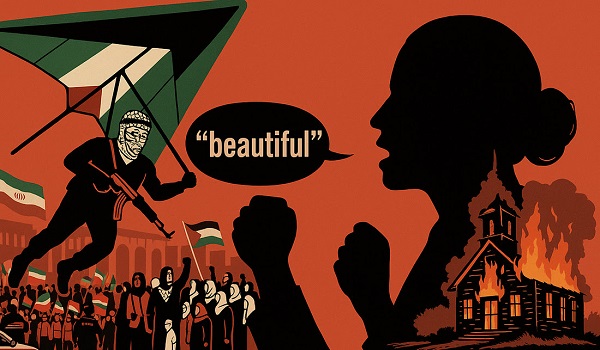Creator
“India? Are you nuts?” Join Gerry for Part 1 of his series on India.

India. Are you nuts? This is the first in a four-part series on India
“India. Are you nuts?” an incredulous friend remarked. “Why would you want to go there? It’s dirty, crowded, smelly and full of stray cows.”
So, I was anxious as I stared out the window of the Dreamliner 787 on descent into New Delhi after a 14-hour flight from Vancouver. But Delhi was nowhere to be seen. The worst smog in the country’s history had enveloped India’s capital. Visibility was near zero.

Smog in India
The late-night ride to the hotel was a dystopian dream. With the twelve-hour time change we were in a trance-like state. The streets were eerily quiet. An acrid smell hung in the air. As we drove through dense smog, the moon made a futile effort to silhouette India Gate, Parliament House and the Prime Minister’s residence.
“What’s happening?” we asked the clerk at check-in.
“Diwali,“ he smiled.
Diwali is an ancient Hindu festival that pays tribute to the victory of light over dark, good over evil – and a highlight of the annual celebration is the setting off of fireworks. When Delhi’s 22,000,000 inhabitants simultaneously ignite firecrackers and other pyrotechnics, the sub-tropical air becomes thick with the stagnant refuse of gunpowder. Add to this the exhaust of 9 million vehicles, smoke from burnt stubble fields in nearby Punjab, plus a temperature inversion – and you have unimaginable, eye-searing air pollution.
“…At the top of the heap are India’s cows. Bovines stand nonchalant, impervious – and sacred – amongst the vehicular pandemonium…”
Schools were closed. Construction was halted. Roads were sprayed to keep dust down. Farmers were threatened with fines for illegally burning rice stubble; all to no avail. The particulate index climbed, from just over 600 when we arrived, to 964 three days later. This level is 15 times the “safe” limit in India – and 60 times what would be considered hazardous in Canada.

Street Vendors during Diwali
Then the currency crisis hit. In an effort to weed out “black money” – cash hoarded through corruption and counterfeiting – Prime Minister Narendra Modi announced the demonetization of all 500 and 1000 rupee bills. That’s like cancelling all our $10 and $20 bills.
India’s 1.3 billion people were given a fortnight to exchange old rupees, after which the old bills would become worthless. The bank lineups were horrifying.
India’s is a cash economy and many people don’t even use banks. The country was in chaos. But surprisingly, most people we met – guides, drivers, shopkeepers, restaurant employees – were sick of the endemic corruption and in favour of this Draconian strategy.
Our tour group consisted of my wife Florence and me, together with our fun-loving travel-mates Kim and Simone from Victoria and Joe and Carla from Saskatoon. We struggled through these pollution and currency crises from the comfort of an air-filtered, credit card-accepting hotel. Meanwhile out on the streets the locals coughed, lined up and resolutely carried on life in 21st century India.

Air quality is an issue
But for me more astonishing and unfathomable than the choking smog and worthless bills was India’s overwhelming, perpetual traffic congestion.
The “sub-continent” has 54 cities with more than a million people. Four of these urban agglomerations have over 20 million souls. And even the smallest Indian village is a clogged spoke of trucks, buses, cars, motorcycles, rickshaws, bicycles and foot traffic. Pecking order is determined by size. Bicycles give way to motorcycles, which give way to rickshaws… ascending up to the big Tata transport trucks.

Traffic is insane
Buses overflow with humanity – arms, legs and heads spilling from every door and window. A moped transports an entire family – and their belongings. The lowly pedestrian occupies the bottom of the traffic heap, flirting death with each wary footstep.
At the top of the heap are India’s cows. Bovines stand nonchalant, impervious – and sacred – amongst the vehicular pandemonium.

Cows rule.
This may come as a somewhat of a surprise but Indians are fantastic drivers. In what can only be termed functional chaos, traffic actually moves. Roads designed for two lanes harbour four – in each direction. The tiniest opening in traffic is immediately filled by the largest object that fits that space. India abhors a vacuum.
Horns blast non-stop in a cacophonous chorus, used not in anger but to convey a message. A little beep means, “Hey, I’m here.” A resolute honk indicates, “I’m filling that gap.” And an extended blast from a bus states unequivocally, “Coming through, out of my way.”
The first two weeks of our month-long stay in India were spent in the company – and under the watchful eye – of guide Anoop Singhal and driver Devinder Singh. Each morning Singh Ji, a soft-spoken Sikh, greeted us with a colourful turban and a contagious smile. (“Ji” is an honorific, used to show respect – and we happily started referring to one another as Kim Ji, Anoop Ji, etc.)

Despite the culinary curry shock to my digestive system – and the occasional experiment with street food – I managed to avoid “Delhi belly.” I credit my intestinal well-being to a daily dose of local yoghurt. But even with the use of air masks, we all eventually succumbed to the dreaded Delhi cough.

The Lake Palace of Udaipur
After “seeing” the capital, we travelled a few hundred kilometers southwest to Udaipur to begin an exploration of the fabulous architecture of Rajasthan. Vast palaces built by fabulously wealthy Maharajas in the 17th century still dominate the landscape. The Lake Palace of Udaipur, the White City, is a stunning snow-white jewel set in a liquid surface.
In Jodhpur, the Blue City, we looked down on a jumble of turquoise buildings from the heights of Mehrangarh Fort. The last in the colourful triumvirate of Rajasthan’s famous towns is Jaipur, the Pink City, where in 1857 Maharaja Ram Singh ordered his palace painted pink to impress the British overlords.

India is a photographer’s paradise. No need to search out photo ops; simply plunk down on any curb and start snapping: a vendor hawking fruit, women in crimson saris haggling over spices, a cow imperially chewing its cud, children laughing, beggars begging. All day, every day the flavour, colour, texture, sound, energy and urgency of India unfolds spontaneously, unrehearsed.
On the last day of our stay in Rajasthan, we stopped in at the famed camel festival of Pushkar where local dromedaries are auctioned annually. I nearly closed on a fine one-humped specimen but was outbid by a clever camel herder from the Punjab. Just as well; probably would have been tough to squeeze a grumpy dromedary into my suitcase.

Next time: Taj Mahal and the Sacred Ganges.
If you go: Explore India from Vancouver B.C., www.exploreindia.ca, capably and professionally handled all aspects of our private month-long tour – air and land travel, hotels, meals, guides, drivers, entrance fees and activities – for one all-inclusive price.

Read more stories on Todayville Calgary.
Creator
Minority Government passes Bill C10 on internet freedom. Opponents pleading with Senate to block it.
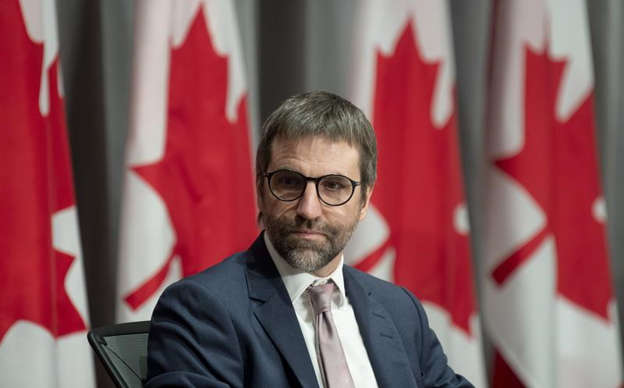
Bill C 10 which is expected to fundamentally affect how Canadians experience the internet, has been hammered through the House of Commons. At 1:30 AM Ottawa time, the minority Liberal Government with help from the BQ and the NDP were able to pass the bill. In opposition were the federal Conservatives and lone Independent MP Jody Wilson-Raybould. The urgency to pass C 10 before an election call expected later this summer resulted in the Liberals actually shutting down debate at the committee level. That’s only happened twice in the history of the country before now! The Liberals also attempted to pass secret amendments which were caught by the Conservatives and ruled “out of order” by the House Speaker.
Why the rush? Opponents are concerned the Liberals, BQ, and NDP are far more concerned with regulating social media use, than they are with boosting individual Canadians creating new content. It appears the urgency has to do with giving themselves the ability to guide internet content, just in time for the federal election campaign.
OpenMedia.org, a group striving to keep the internet “open, affordable, and surveillance-free” calls the government’s bill “outrageously flawed”. The group published an article called “What’s wrong with Bill C 10?” which asks and answers 8 key questions surrounding C 10. The article provides excellent background knowledge for Canadians concerned about the future of the internet.
OpenMedia says the goal of the bill is to expand “Canada’s Broadcasting Act to apply to all streaming audio or video content on the Internet, including Netflix, Spotify, Youtube, and other popular streaming services.” Streaming services will be forced to make higher payments to the Canada Media Fund which would mean higher rates paid for Canadian users. According to OpenMedia streaming services will charge higher Canadian specific fees, and may even avoid Canada altogether.
OpenMedia calls C 10 a “cash-grab for traditional broadcast industries” which actually does nothing to serve the new wave of content creators who could really use a boost on the international stage. As a last ditch attempt to stop the bill, OpenMedia.org is urging Canadians to email the Senate right now to ask for a REAL democratic examination of Bill C-10.
Conservative critic Pierre Poilievre is especially concerned with the federal government giving itself the power to block unapproved ideas from popular content creators like himself, just in time for the next federal election. Surprisingly, and maybe most concerning of all, both OpenMedia and Pierre Poilievre point out the bill ‘DOESN’T ADDRESS WHAT CANADIAN CONTENT IS’. The current definition of “Canadian Content” was last updated in 1984, more than a decade before the internet changed everything.
Alberta
Alberta’s Distinguished Artist Award Recipients Announced
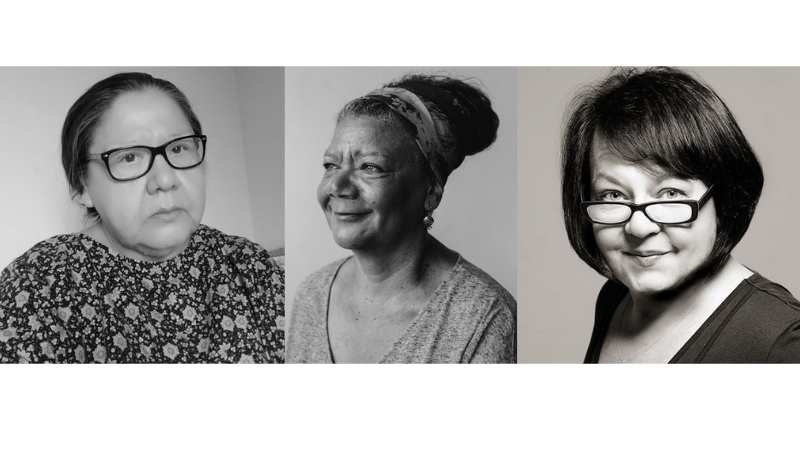
June 16, 2021
Alberta’s Distinguished Artist Award Recipients Announced
(Calgary, AB) The Lieutenant Governor of Alberta Arts Awards Foundation is pleased to announce that artist Faye HeavyShield (Blood Reserve, Kainaiwa Nation, AB), writer and filmmaker Cheryl Foggo (Calgary, AB), and dance choreographer Vicki Adams Willis (Calgary, AB), have been selected to receive the 2021 Lieutenant Governor of Alberta Distinguished Artist Award.
Arlene Strom, chair of the Lieutenant Governor of Alberta Arts Awards Foundation said, “Albertans can be proud of these three whose contributions have pushed the boundaries of art to reflect Indigenous identity and expression; present a more inclusive and diverse view of Alberta’s history; and define the province as a beacon for jazz dance artists. Each has contributed immeasurably to the development of the province’s artists, arts communities and expanding art disciplines.”
Faye HeavyShield, Visual Arts

Faye Heavyshield
Over the past 30 years, Faye HeavyShield has been one of Canada’s pre- eminent artists within Alberta and the Blackfoot Confederacy. Currently living on the Blood Reserve in southwestern Alberta, Faye studied at Alberta University for the Arts in Calgary.
Honouring her Kainaiwa (Blood) Nation, the striking landscape they dwell within and the Blackfoot language which she speaks, Faye HeavyShield’s legacy of three-dimensional art and sculpture including recent installations incorporating photography and delicately constructed paper figures make her a senior figure in the artistic and cultural renaissance of Indigenous nations in the country.
“…My art is a reflection of my environment and personal history as lived in the physical geography of southern Alberta with its prairie grass, river coulees, and wind and an upbringing in the Kainaiwa community. I would say the environment is an extension of myself because it’s always been there, from the time I was a child. It was one of the first things that I saw and smelled. I consider it a part of me. The landscape is an extension of the body because we’re dependent on it, and to flip that, the landscape is dependent on us…” Faye Heavyshield
Beyond her personal practice, Faye is actively involved with her community by working with youth through art programming and creating cultural connections for children in care.
Cheryl Foggo, Playwright, screenwriter, film maker, author

Cheryl Foggo
Creating a more inclusive and diverse view of Alberta’s history through her plays, films, books, articles and multi-media presentations has been Cheryl Foggo’s life work. Profiled in Who’s Who in Black Canada and the recipient of the 2008 national Harry Jerome Award for The Arts, Foggo has applied her talent as a researcher and writer to uncovering the compelling but overlooked stories of Alberta’s Black settlers and
cowboys. Most recently, the award winning National Film Board feature- length documentary, John Ware Reclaimed (2020), highlighted an earlier thriving Black community in the province often left out of the history books.
Her seminal, autobiographical book, Pourin’ Down Rain: A Black Woman Claims Her Place In The Canadian West, is a powerful narrative of Foggo’s ancestors’ journey from enslavement in the United States to Western Canada. The book, first published in 1990, received the distinction of a special 30th anniversary reprint in 2020. Her books for young people: Dear Baobab, I Have Been in Danger and One Thing That’s True have garnered many commendations between them, including One Thing That’s True being short-listed for the Governor General’s Award. In addition to her books, Cheryl Foggo has published prose in more than 40 journals and anthologies.
Two new productions of Foggo‘s plays are scheduled in 2021 with the Citadel Theatre in Edmonton and the Urgency Collective in Calgary, and her short play The Sender is currently available through Toronto’s Obsidian Company’s 21 Black Futures Project. As a cultural activist, mentor and volunteer she advocates for writers and Black artists.
Vicki Adams Willis Performing Arts: Dance

Vicki Adams Willis
Vicki Adams Willis has changed the face of jazz dance in Alberta and Canada. A co-founder nearly 40 years ago of Decidedly Jazz Danceworks (DJD), she is foremost a teacher and choreographer of more than 35 original productions. She is recognized as a true leader in the world of jazz; an acclaimed ground-breaking choreographer who created one of the most unique jazz dance companies in the world, and the key person to ensure Calgary, Alberta as a viable dance centre for serious jazz artists. She has helped to change the very course of the jazz dance art form by influencing students, dancers, musicians and audiences with her strongly researched and brilliantly creative work.
Jazz dance is a misunderstood art form. Born of African parents and of the Black American experience, Vicki Adams Willis acknowledges herself as a guest in this form and has demonstrated her deep understanding of, and utter respect for, the authentic roots and history of jazz through her research, teaching and choreography. The company she co-created in 1984 – Decidedly Jazz Danceworks (DJD) has gained international recognition. It has been referenced in articles, dissertations, anthologies and, most recently, in an award-winning international film: Uprooted–The Journey of Jazz Dance, which had its Canadian premiere at the 2021 Toronto Black Film Festival.
“..These three ground-breaking women have offered important contributions to the arts in Canada. Their creativity has brought new light to their respective disciplines and created countless opportunities for us all to learn, grow and explore fresh ideas. Artists like this are essential to the vibrancy of our communities and we are truly fortunate to have them as cultural leaders in our province and country as a whole…”
Her Honour, the Honourable Salma Lakhani, Lieutenant Governor of Alberta
The laureates will each receive a handcrafted medal, a $30,000 award and a two-week residency at the Banff Centre’s Leighton Artist Studios. The awards patron, the Honourable Salma Lakhani Lieutenant Governor of Alberta, will present the awards at a celebration hosted by the Community of Lac La Biche and Portage College, Lac La Biche campus, at an awards event June 10 and 11, 2022.
The awards are funded through an endowment established with private donations and gifts from the Province of Alberta and Government of Canada. The Lieutenant Governor of Alberta serves as honorary patron of the awards. Since its inception, 23 Distinguished Artists and 63 Emerging Artists have been recognized across Alberta with this significant honour. See details at artsawards.ca
The 2021 Distinguished Artists were chosen from nominations received and reviewed by a jury of experts overseen by the Banff Centre for Arts and Creativity. Jurors for the 2021 Distinguished Artist Awards were Mary-Beth Laviolette, visual arts curator and author; John Estacio, 2017 Distinguished Artist and JUNO nominated composer; Seika Boye, scholar, writer, artist and Assistant Professor, University of Toronto, Centre for Drama, Theatre & Performance Studies; Jordan Abel, Nisga’a writer from Vancouver and Assistant Professor in the Department of English and Film Studies at the University of Alberta teaching Indigenous Literatures and Creative Writing.
Click to learn more about the Lieutenant Governor of Alberta Arts Awards Foundation.
Read more on Todayville.com.
-

 Agriculture2 days ago
Agriculture2 days agoCanada’s supply management system is failing consumers
-

 Alberta1 day ago
Alberta1 day agoAlberta uncorks new rules for liquor and cannabis
-

 Energy19 hours ago
Energy19 hours agoB.C. Residents File Competition Bureau Complaint Against David Suzuki Foundation for Use of False Imagery in Anti-Energy Campaigns
-
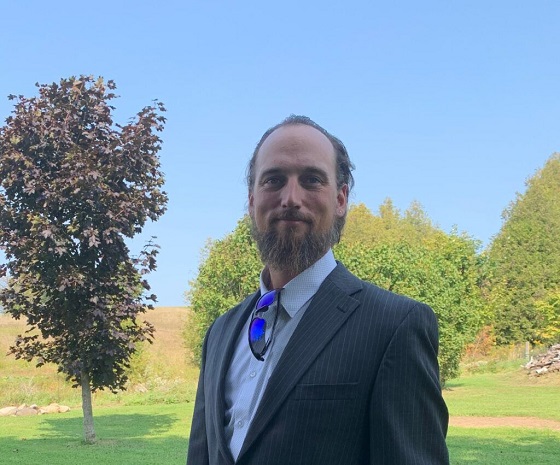
 COVID-1919 hours ago
COVID-1919 hours agoCourt compels RCMP and TD Bank to hand over records related to freezing of peaceful protestor’s bank accounts
-

 Crime1 day ago
Crime1 day agoProject Sleeping Giant: Inside the Chinese Mercantile Machine Linking Beijing’s Underground Banks and the Sinaloa Cartel
-
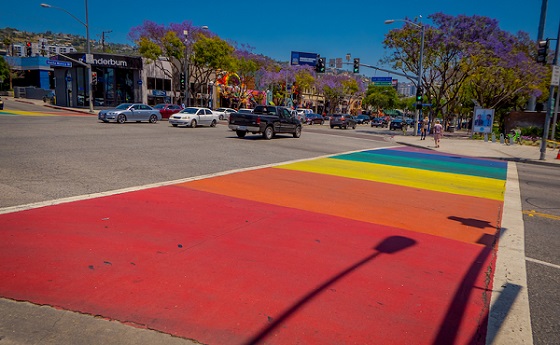
 International1 day ago
International1 day agoTrump transportation secretary tells governors to remove ‘rainbow crosswalks’
-
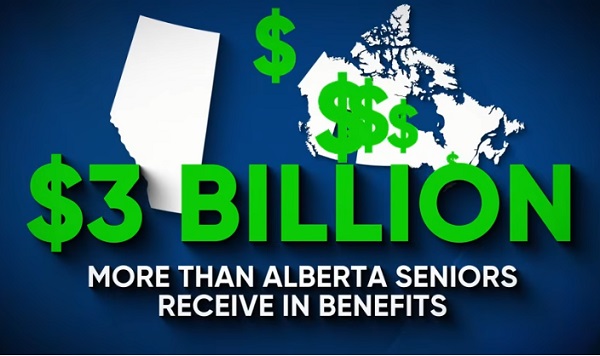
 Alberta23 hours ago
Alberta23 hours agoAlberta Next: Alberta Pension Plan
-

 C2C Journal17 hours ago
C2C Journal17 hours agoCanada Desperately Needs a Baby Bump

